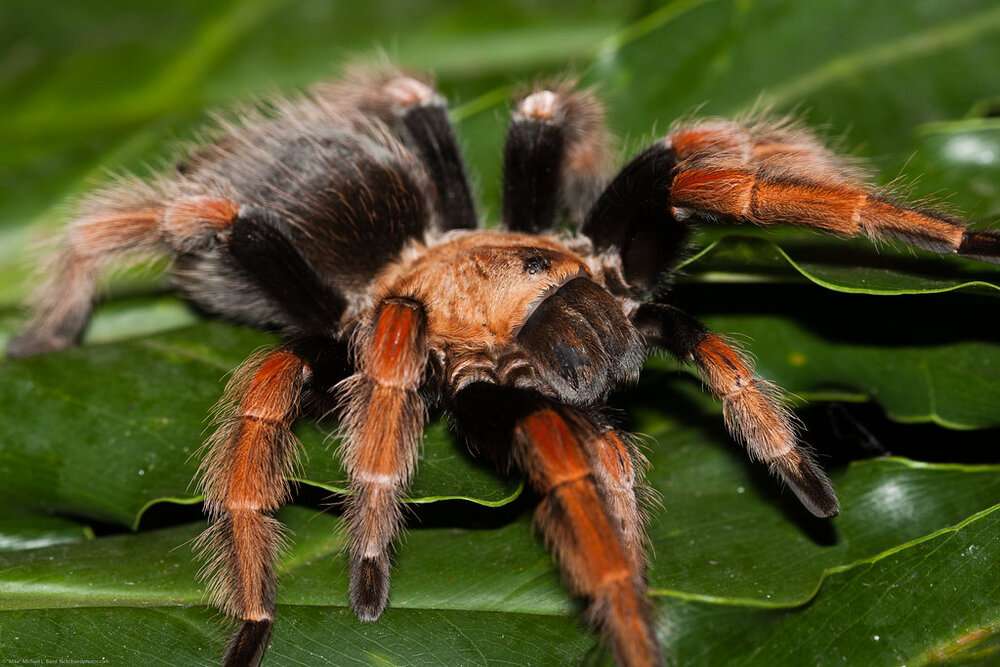
The Mexican fireleg or Mexican rustleg tarantula, also known as Brachypelma boehmei, is a tarantula that is indigenous to the state of Guerrero in Mexico. These long-lived tarantulas love the arid scrubland, where they may hide and burrow. When threatened, they defend themselves with urticating hair like all closely related tarantula species. Because of their fiery red and orange coloring, they are one of the tarantulas that are kept as pets more frequently.
Characteristics
- The vivid orange and black coloring of the Mexican fireleg tarantula resembles that of its better-known relative, the Mexican redknee tarantula (Brachypelma hamorii, which was formerly mistaken for Brachypelma smithi), even though the size of the adults of the species ranges from 5 to 6 inches.
- Compared to many of the larger South American tarantula species, this species grows more slowly. The vivid orange color of the carapace and lower legs are separated by a dark stripe that is provided by the black femora (upper legs).
- The legs of this species are a vivid, fiery red on the patellae (or knees), decreasing gradually to a softer orange farther down, and are finished with black tarsi.
- This contrasts with the orange joints of Brachypelma hamorii (or feet). Although not very aggressive, this type of spider has an anxious nature, and when threatened, it may flick irritating hairs.

Geographical Distribution and Habitat
The Mexican fireleg tarantula is a native of southern and occasionally western Mexico. It is found in western Guerrero State along the central Pacific coast, where it prefers dry scrubland. It is typically found in burrows that are either man-made or abandoned rodent or lizard burrows that are found beneath rocks or downed logs.
Food Sources
Mexican fireleg tarantulas consume small birds, worms, small mice, frogs, lizards, and insects. When they detect the vibrations of an approaching animal, they spring out of their burrows and catch it. They wait in their tunnels for prey to pass by. They immediately inject venom into it before wrapping it in their webs. Their digestive secretions liquefy the prey before being sucked up with a mouth resembling a straw.
Reproduction
The female Mexican fireleg tarantulas lay an egg sac in the spring after mating in the fall. Males may tap on the ground outside the female’s burrow to determine whether she is receptive before leaving their burrows in search of the female. During this moment, the males must be vigilant since an unresponsive female may try to fast consume him. The male will spin a sperm web and the female will emerge from her burrow if she is receptive. He will spread his sperm around the web before giving it to the female.
Mexican fireleg tarantula females often lay 200–400 eggs. The egg sac will be kept in her burrow where it will be protected and rotated on a regular basis to ensure that as many eggs as possible are fertilized. The young stay with the mother for a few more weeks after the eggs hatch before leaving the nest.
Lifespan
Males typically live 7-8 years compared to females 20–25 years, which is a significant difference in life expectancy. Males normally only have a few more months to live before their life cycle is over if they are not devoured during mating.
Handling as Pet
They are ideal as a display animal due to their typically placid disposition, respectable yet manageable size (between 5 and 6 inches), and magnificent colors. Some spiders are more amenable to handling than others, but handling them should still be done carefully.
Table





